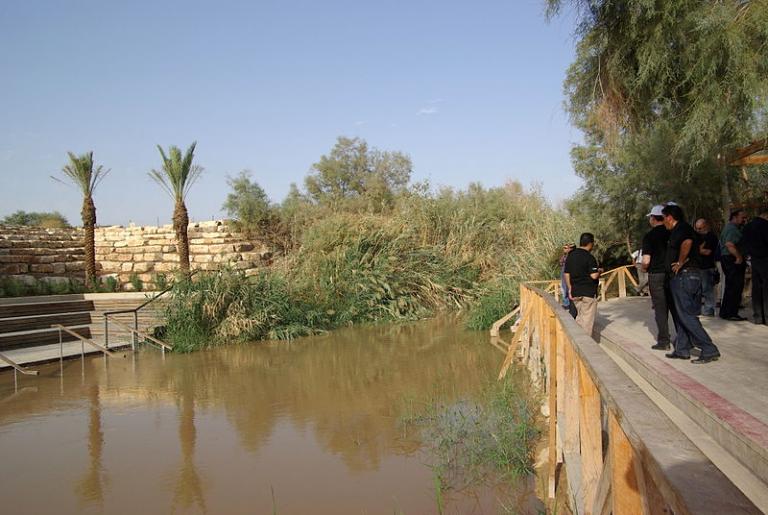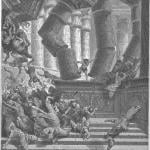
(Wikimedia Commons public domain photograph)
All four gospels describe the baptism of Jesus in the Jordan River at the hand of John but, in certain regards, they do it rather differently.
Only John 1:29, for example, has the Baptist exclaim to the crowd, when he sees Jesus approaching, “Behold, the Lamb of God, who takes away the sin of the world!”
Only Matthew 3:13-14 has the Baptist try to persuade Jesus not to be baptized, saying “I need to be baptized by you, and do you come to me?” And only Matthew 3:15 gives us the reply of Jesus (“Let it be so now; for thus it is fitting for us to fulfill all righteousness”) and the Baptist’s relenting consent.
All four gospels mention a “dove,” but their descriptions vary:
Matthew 3:16 and Mark 1:10 both describe Jesus seeing “the heavens” open (nominative plural in Matthew and accusative plural in Mark). Both say that he saw “the Spirit of God” (Matthew) or simply “the Spirit” (Mark) descending upon him “like a dove” (respectively, ὡσεὶ περιστερὰν and ὡς περιστερὰν). In Luke, “the heaven” (singular) is seen to open and “the Holy Spirit” is seen descending upon Jesus “in bodily form, like a dove” (σωματικῷ εἴδει ὡς περιστερὰν), but we’re not told who sees these things. In John 1:32, it’s the Baptist who sees “the Spirit” descend “as a dove from heaven” (ὡς περιστερὰν ἐξ οὐρανοῦ).
In Matthew, Mark, and Luke, a voice — implicitly but clearly that of God the Father — comes from “the heavens” (Matthew and Mark) or “heaven” (Luke), testifying that Jesus is “my beloved Son” in whom the speaker is “well pleased.” In John, the Baptist is quoted as saying that he had been divinely advised aforetime that the person on whom he saw the Spirit descend “as a dove from heaven” would be the one he was awaiting, and it is John the Baptist himself who bears witness that Jesus is “the Son of God.”
Julie Smith’s 2018 volume in the BYU New Testament Commentary, The Gospel according to Mark, discusses this episode beginning on page 86. She allows for various possibilities. Does descending like a dove suggest the serenity or gentleness of the Spirit’s coming down? Was an actual dove really present? She cites Joseph Smith as teaching that, from the Creation, the symbol of the Holy Ghost or Holy Spirit has been a dove.
S. Kent Brown’s 2015 volume The Testimony of Luke (also a part of the BYU New Testament Commentary) treats the baptism of Jesus commencing on page 206. “All the Gospels,” he observes on pages 207-208, “record that the Holy Ghost descends onto Jesus, plainly implying that the Holy Ghost bears characteristics that fit within our terrestrial time and place. . . . Only Luke notes the ‘bodily shape,’ imputing physical characteristics to the Holy Ghost, though he does not appear as a bird.” “The Prophet Joseph Smith teaches that “the sign of the dove” was “instituted before the creation of the world” and that “the devil cannot come in the sign of a dove” (208).











